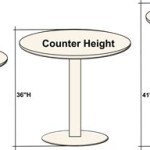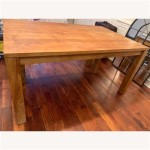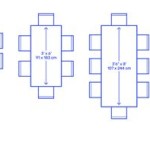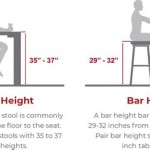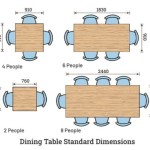Japanese Style Dining Table: A Study in Simplicity and Functionality
Japanese dining tables represent a significant departure from their Western counterparts, embodying a philosophy of minimalism, functionality, and a deep connection to nature. These tables, often lower to the ground than standard dining tables, reflect traditional Japanese customs and aesthetics, contributing to a unique dining experience centered around community and mindful eating. Understanding the nuances of Japanese style dining tables requires exploring their historical underpinnings, design principles, and the diverse range of options available.
The historical context of Japanese dining tables is inextricably linked to the evolution of Japanese home design and social practices. Traditionally, Japanese meals were served on individual trays or low tables called "chabudai" or "zabuton." These allowed diners to sit comfortably on tatami mats, the traditional woven flooring, close to the ground. This style promoted a sense of intimacy and connection among diners, reflecting the importance of family and community in Japanese culture. The minimalist aesthetic seen today is a direct descendent of this historical practice, emphasizing clean lines and the inherent beauty of natural materials.
Over time, as Western influences permeated Japanese society, variations on the traditional table emerged, incorporating elements of both Eastern and Western design. However, the underlying principles of simplicity, functionality, and a connection to nature have remained core to the design of Japanese-style dining tables. These principles are manifested in the materials used, the table's overall form, and its integration into the surrounding space.
Key Point 1: Design Principles and Characteristics
The design of a Japanese style dining table is characterized by several key principles. Simplicity reigns supreme, with an emphasis on clean lines and uncluttered surfaces. Ornamentation is typically minimal, allowing the natural beauty of the materials to take center stage. Functionality is also paramount, with tables designed to be practical and easy to use. This often translates into lightweight construction for easy movement, durable surfaces for longevity, and thoughtful storage solutions in some designs.
Materials play a crucial role in defining the aesthetic of a Japanese dining table. Wood is the most common material, prized for its natural warmth and beauty. Popular wood choices include cedar, pine, bamboo, and Japanese cypress (hinoki). These woods are often chosen for their durability, unique grain patterns, and pleasant aroma. The wood may be left natural, stained, or finished with a clear coat to protect the surface while allowing the wood's natural character to shine through.
Form is another critical aspect of Japanese dining table design. Tables can range in shape from rectangular to square to round, but they all share a common thread: a low profile. This lower height encourages diners to sit closer to the ground, typically on cushions or floor seating, creating a more intimate and relaxed dining experience. The legs of the table are often simple and understated, further emphasizing the minimalist aesthetic.
Beyond the basic form and materials, Japanese dining tables often incorporate subtle design details that enhance their functionality and aesthetic appeal. These details may include rounded edges for safety and comfort, integrated storage compartments for tableware, or a carefully chosen finish that complements the surrounding décor. These details, while seemingly minor, contribute significantly to the overall design and functionality of the table.
Key Point 2: Types of Japanese Dining Tables
The term "Japanese dining table" encompasses a range of styles, each reflecting different aspects of Japanese culture and design. Understanding these different types can help individuals select the table that best suits their needs and preferences.
The traditional "chabudai" is a low, short-legged table designed for use while sitting on tatami mats. These tables are typically small and lightweight, making them easy to move and store. They are often used for informal meals or tea ceremonies and are a staple in traditional Japanese homes. Contemporary versions of the chabudai may incorporate modern materials and finishes but still retain the table's low profile and minimalist design.
"Kotatsu" tables are a unique type of Japanese table designed for use in the winter months. These tables feature a built-in heating element underneath the tabletop, with a blanket draped over the table to trap the heat. Diners sit around the kotatsu, placing their legs under the blanket for warmth and comfort. The kotatsu is a popular gathering place for families during the winter and represents a symbol of warmth and togetherness.
Standard height dining tables with Japanese design elements are also available. These tables combine the functionality of a standard dining table with the aesthetic principles of Japanese design. They typically feature clean lines, minimalist ornamentation, and are made from natural materials like wood. These tables can be paired with traditional dining chairs or with floor seating to create a unique and comfortable dining experience.
Finally, there are folding Japanese dining tables. These tables are designed for small spaces and offer a convenient way to create a dining area when needed. They typically feature a simple folding mechanism that allows them to be easily stored when not in use. Folding tables are a practical choice for apartments or homes with limited space and are often used for casual meals or as temporary workspaces.
Key Point 3: Integrating a Japanese Dining Table into a Home
Successfully integrating a Japanese style dining table into a home requires careful consideration of the surrounding décor and the overall aesthetic. The goal is to create a space that is both functional and visually appealing, reflecting the principles of Japanese design.
Selecting the right dining chairs or seating is crucial. Traditional Japanese dining typically involves sitting on cushions or zabuton mats on the floor. However, if a standard height table is chosen, low-profile chairs with simple designs are a suitable option. The chairs should complement the table's materials and finish, creating a cohesive and harmonious look.
Lighting plays a significant role in setting the mood for a Japanese dining experience. Soft, indirect lighting is preferred, creating a warm and inviting atmosphere. Paper lanterns or pendant lights with a simple design can be used to provide ambient lighting. Avoid harsh, direct lighting, which can be jarring and detract from the overall ambiance.
Tableware and accessories should also be carefully chosen to complement the Japanese aesthetic. Simple, minimalist tableware in neutral colors is a good choice. Ceramic plates, bowls, and teacups are popular options. Avoid overly ornate or decorative tableware, which can clash with the table's simple design. A few carefully chosen accessories, such as a small vase with flowers or a simple table runner, can add a touch of elegance to the table setting.
The surrounding décor should also reflect the principles of Japanese design. This includes incorporating natural elements, such as plants and wood, and creating a sense of calm and tranquility. Minimalist artwork, such as calligraphy or landscape paintings, can be used to add visual interest without overwhelming the space. Avoid clutter and excessive ornamentation, which can detract from the overall sense of serenity.
Ultimately, the key to successfully integrating a Japanese style dining table into a home is to embrace the principles of simplicity, functionality, and a connection to nature. By carefully considering the table's design, the surrounding décor, and the overall aesthetic, individuals can create a dining space that is both beautiful and functional, reflecting the timeless elegance of Japanese design.

Buy Solid Wood Japanese Style Low Dining Table With Breakfast Set In Latest Sets Collection Saraf Furniture

Goyalinterior Sheesham Wood Japanese Low Height Dinner Table And Chair Set For Livingroom Home Solid 6 Seater Dining In Buy

Fmxymc Japanese Floor Table Rectangular Style Tatami Vintage Tea Low Including 4 Seats For Sitting On The Accent Furniture 14 Luxury Coffee Dining Design

Low Square Coffee Table Dining Desk Japanese Floor Chabudai With Chair For Pillow Cushion Natural Bamboo

Japanese Style Dining Table And Chair Combination Modern Minimalist China Solid Wood Home Furniture Made In Com

Buy Japanese Style Dining Table In
I Was Thinking About Getting A Chabudai Japanese Dining Table To Double As Coffee And Which Would Require Sitting On The Floor Guests American Mind

20 Trendy Japanese Dining Table Designs Furniture Sets Design Rustic

33 Modern Floor Sitting Dining Table Design Japanese Room Ideas

Modern Designs Revolving Around Japanese Dining Tables
Related Posts

